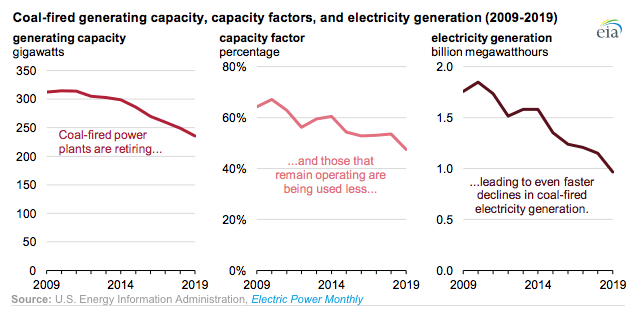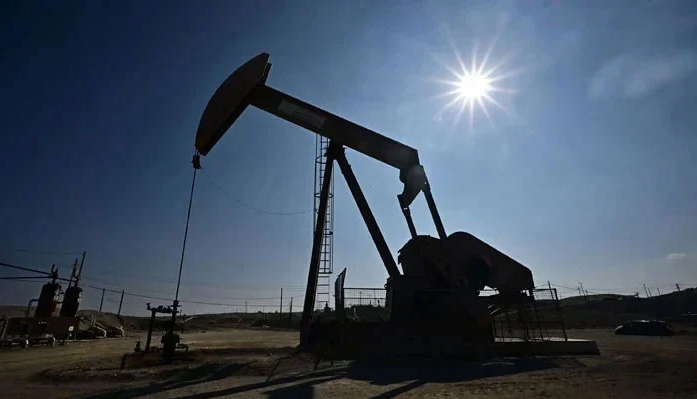“The miners are coming back,” Trump said of the coal mining industry at an election rally in Louisville, Kentucky, more than four years ago. But, despite all the slogans and plackards proclaiming “Trump digs coal”, the industry hasn’t come back. In fact, coal generation in the US fell to a 43 year year low in 2019 after the largest percentage fall on record.

According to data released by the US Energy Information Administration on Monday, output from the US coal-fired generating fleet dropped to 966,000 gigawatthours (GWh) in 2019, the lowest level since 1976.
The decline in last year’s coal generation levels was the largest percentage decline in history (16 per cent) and second-largest in absolute terms (240,000 GWh).
The slump in output is also reflected in a devastating reduction in coal generation capacity in the US – falling by nearly a third from 318 gigawatts (GW) in 2011 to 229GW in late 2019. Even those coal plants that remain in service are hardly used, operating at an average capacity factor to just 48 per cent – little more than the best wind farms – making it hard for the operations to make money.

And it comes as the UK reports a month without coal generation for the first time since the Industrial Revolution. In Germany in April, coal generation fell to an historic low and is less than half its output in 2010.
In the US, the EIA puts the cause of coal’s spectacular decline, even with the presence of a cheer-leading president, on three different factors – lower demand, record levels of gas generation, and record levels of renewables, particularly wind. Gas-fired generation reached rose eight per cent in 2019 to nearly 1.6 million GWh while wind output jumped 10 per cent to a new record of 300,000 GWh.
The EIA notes that the big switch to gas is driven by its lower prices. But it notes that the price of coal delivered to generators has also slumped by around 10 per cent in the last few years to an average $US2.00 per million British thermal units (MMBtu) in late 2019.
The fall in the delivered price of the coal supply, however, wasn’t enough to keep up with gas because coal generation is so inefficient. “For coal to be competitive, its delivered cost must be at least 30 per cent lower to make up for the differences in efficiency between a typical coal-fired plant and a typical natural gas-fired plant,” the EIA says.
And that’s without having to deal with more equipment to deal with emissions, despite the attempts by the Trump administration to wind back so many of the pollution controls.
A typical example is the case of Coal Creek Station, which is to be closed by Great River Energy in Minnesota and replaced by a combination of wind, new gas plants and a pilot project that will test a new “ultra cheap” battery with “super long” storage, in this case 150 hours of storage.
According to estimates by Rocky Mountain Institute, Coal Creek operated at a net loss of over $US60 million per year on average for 2015–2018, compared to purchasing equivalent energy and capacity within the regional market. Its retirement and replacement by renewables will likely save Great River’s Minnesota members at least that much as new, lower-cost, clean energy resources are brought online, it said.







